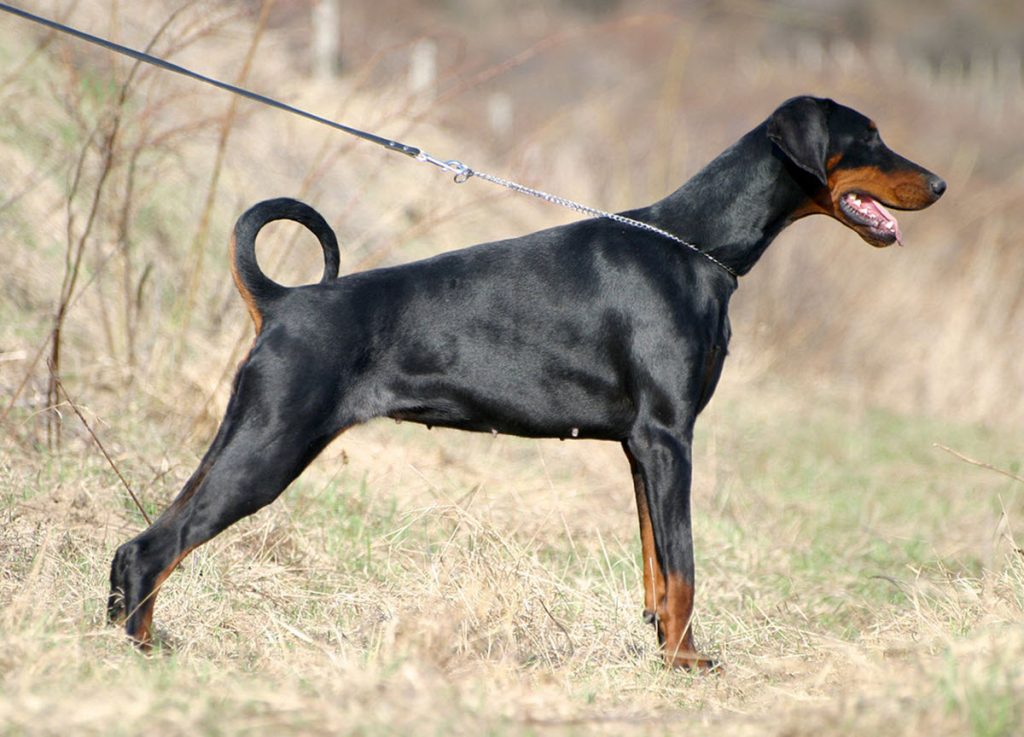Contents
Known for their loyalty, intelligence, and strong protective instincts, Dobermanns are one of the most well-known dog breeds in the world. Originating in Germany in the late 19th century, these dogs have become favourites for various roles, including police work, search and rescue, and family pets. Let’s explore the world of Dobermanns and their history, characteristics, training, and maintenance requirements.

The Dobermann breed was developed by a German tax collector named Karl Friedrich Louis Dobermann, who desired a medium-sized guard dog to protect him during his rounds. He selectively bred dogs for specific traits, including loyalty, intelligence, strength and ferocity. The result was the Dobermann, a dog breed recognized for its protective instincts and high trainability.
Louis Dobermann commenced his breeding program in the 1880s, when he was not only working as a tax collector but also running a dog pound in Apolda, Thuringa, in central Germany. This pound gave him access to many different dogs that he could use for the breeding program.
Exactly which dogs were included in the early days of the Dobermann breed remains unknown, but an educated guess is that the Dobermanns had plenty of genetic material derived from German Pinscher, Rottweiler, Weimaraner and Beauceron, and according to some experts, the old-style German Shephard was the single most important contributor of DNA for the Dobermann breed. We also know that a Greyhound and a Manchester Terrier were crossed as a part of the development of the Dobermann breed.
According to the American Kennel Club, Rottweiler, Black and Tan Terrier, Old Shorthaired Shepherd, and German Pinscher have been important genetic contributors to the Dobermann breed.
Five years after the death of Louis Dobermann, Otto Goeller, another dobermann breeder, founded the National Doberman Pinscher Club. Goeller´s work with the Dobermanns in the 1890s have had a huge impact on the breed.
Pinscher is the German word for terrier, and roughly half a century after the foundation of the breed club, the term Pinscher was removed from the breed´s name in Germany since calling it a terrier was deemed to no longer be appropriate. A few years later, the British breed club followed in suit, and many other countries have now removed “pinscher” from the breed´s name. Two notable exceptions are the USA and Canada, where the name is Doberman (with just one n) Pinscher.
Dobermanns display a blend of strength, endurance, and elegance. They have a compact, muscular build that accompanies a great deal of speed and stamina. The breed’s average height ranges from 24 to 28 inches, and they weigh between 70 to 100 pounds. Their coat is short, thick, and close-fitting, available in various colors including black, red, blue, and fawn, usually with rust-colored markings.
Traditionally, the ears have been cropped, and the tail docked, but these practices are now banned in many countries.
Despite their intimidating appearance, Dobermanns are known for their loyalty, intelligence, and strong protective instincts. These dogs are extremely versatile, excelling in both physical tasks and tasks that require intelligence. They are sensitive and responsive to their owners’ commands, making them an excellent choice for a working or companion dog.
Dobermanns are highly intelligent and are usually easy to train. They respond positively to rewards-based training that includes treats, praise, and games. Early socialization is crucial for this breed, as it helps them develop into well-rounded dogs. They also require mental stimulation to prevent boredom and destructive behaviors.
Like all breeds, Dobermanns are susceptible to specific health conditions. These include hip dysplasia, heart conditions, and von Willebrand’s disease. Regular check-ups with a vet are crucial in detecting any potential issues early. As active dogs, they require daily exercise to keep them physically fit and mentally stimulated.
The Dobermann, with its mix of loyalty, intelligence, and protective instincts, makes a great companion for the right person or family. While this breed may require a firm yet caring hand in training, their responsiveness and eagerness to please often make the task rewarding. With proper care, a Dobermann can not only be a loyal protector but also a loving member of your family.